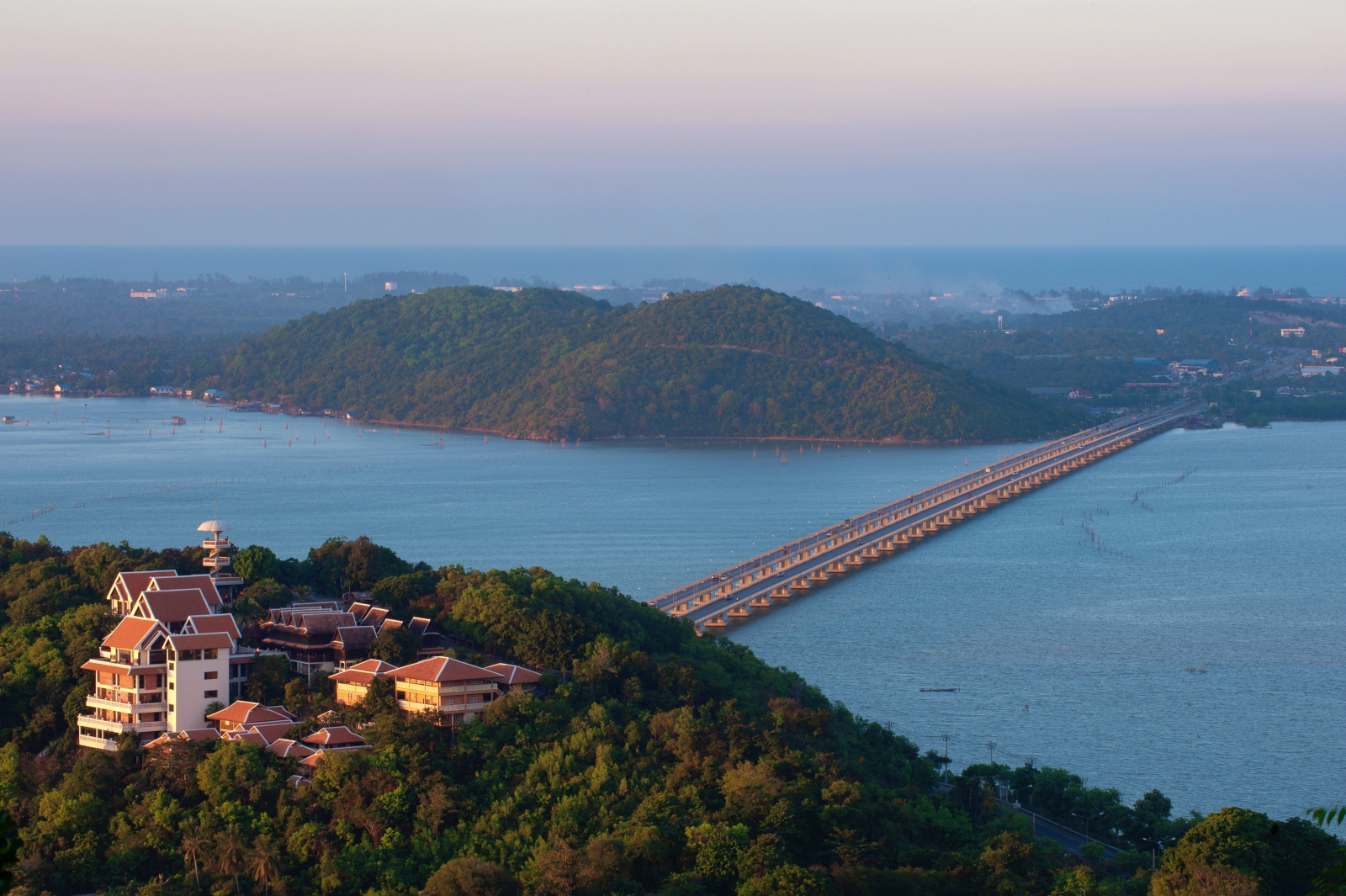
Thailand’s Songkhla Lake bridge needs review
The cabinet last week approved 6.6 billion baht for construction of two bridges in southern region — one of which raises fears about its impact on rare and endangered Irrawaddy dolphins in Songkhla Lake.
The bridges will improve logistics and cut travel time, according to the Transport Ministry, which proposed the projects.
The first bridge, if built, will connect Songkhla’s Krasae Sin district with Khao Chaison district of Phatthalung province.
Costing 4.8 billion baht, the bridge will cut the travel distance to seven kilometres from about 80km, and cut the travel time to about 15 minutes from the current two hours.
The second project is a 1.92-km bridge that will link Lanta and Lanta Noi islands. It will cost 1.8-billion-baht to construct and save travel time between the islands from two hours by ferry to a matter of minutes.
The bridge over Songkhla Lake, however, has caused alarm among conservationists and the World Bank, who has agreed to cover about 70% of the project’s cost through loans.
The World Bank is reportedly concerned by the possible impact of the bridge on the last remaining pod of the endangered freshwater Irrawaddy dolphins in the South’s largest freshwater lake.
If their concerns are addressed, the World Bank will approve the required loans and the three-year construction period could begin as early as next year.
At about 1,040km², Songkhla Lake is the country’s largest lake, but the latest surveys indicated only 14 Irrawaddy dolphins were left in the lake.
Last year, the Department of Marine and Coastal resources warned that the Irrawaddy dolphins may become gone completely from Songkhla Lake in eight years if a conservation plan isn’t implemented immediately.
If the plan to build a bridge across Songkhla Lake goes ahead next year, then the dolphins may become extinct much sooner than anticipated.
The number of Irrawaddy dolphins has been steadily declining in the wild over the past 30 years due to the widespread use of larger, sturdier nets by fishermen, which, according to the DMC, causes 60% of freshwater dolphin fatalities in the wild.
Irrawaddy dolphins generally live along large rivers, with established populations noted far upstream in Cambodia’s Mekong River, Indonesia’s Mahakam River on Borneo island, as well as Myanmar’s Ayeyarwady River.
Songkhla Lake is one of only two lakes where the dolphins have been found, the other being Chiliqa Lake in India.
Unfortunately for the dolphins in Songkhla Lake, there has been no tangible conservation plan implemented to protect them whatsoever by the government — apart from listing the Irrawaddy dolphins as a conserved species which receives the highest level of protection under the law.
The project which poses the highest threat to the species survival, however, remains intact.
The government must come up with an urgent and comprehensive conservation plan to save Songkhla Lake’s last pod of Irrawaddy dolphins.
Those in charge of the project must remember that while infrastructure without a doubt plays an important role in the region’s economic development, environmental awareness and conservation is no less important for our future generations.
BANGKOK POST EDITORIAL COLUMN
These editorials represent Bangkok Post thoughts about current issues and situations.
Source: https://www.bangkokpost.com/opinion/opinion/2421136/lake-bridge-needs-review


